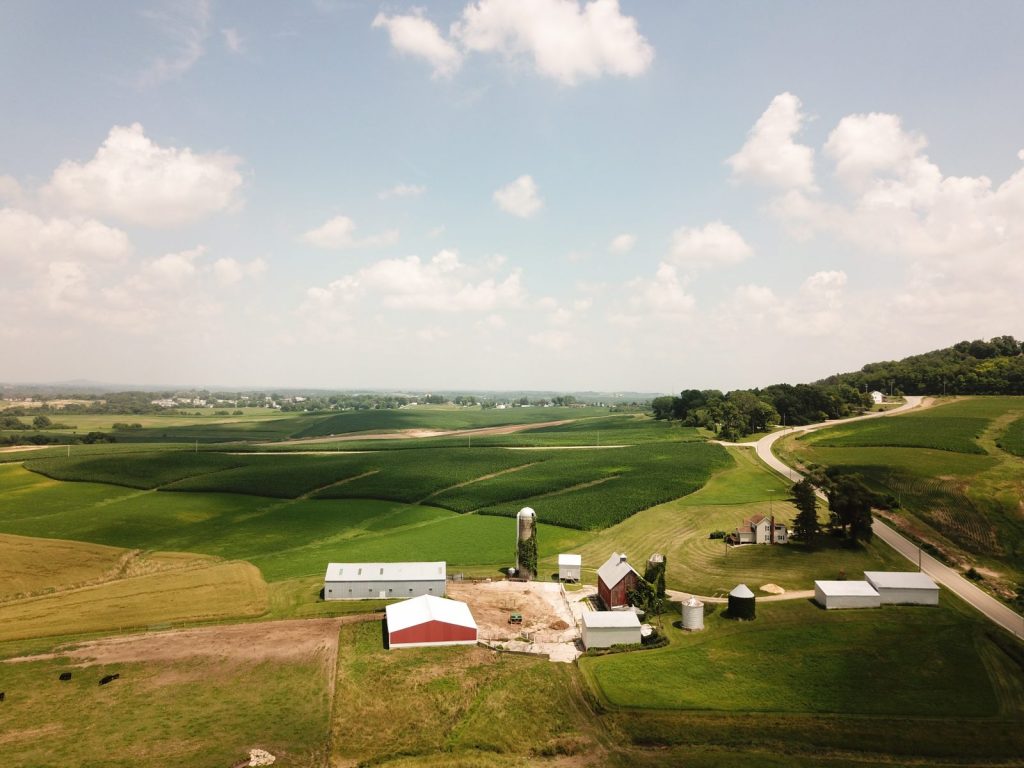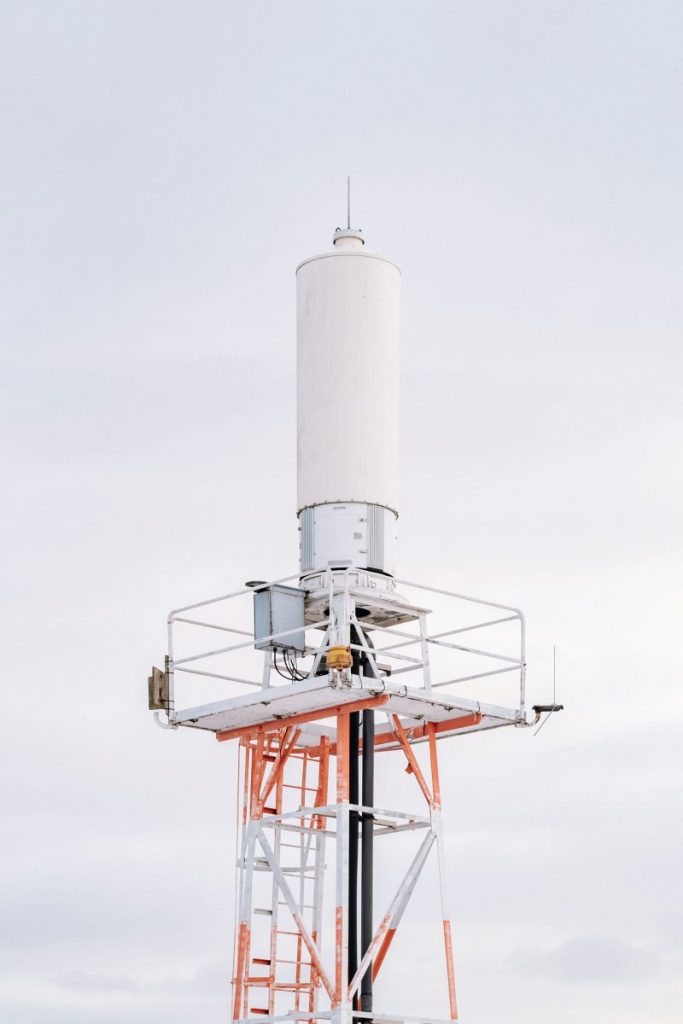
Articles
Editor’s Picks
Industry News
How TV White Space Internet will Bridge the Global Digital Divide: Dr. Rouzbeh Yassini in Conversation
By Henry Kronk
January 17, 2019
In recent years, a few stories have popped up regarding efforts to bring broadband internet to rural areas via TV broadcast frequencies. Among these, Microsoft has made the biggest splash with its Airband initiative. Other groups, such as Connect Americans Now (CAN) and RTO Wireless have also been moving the dial forward. The technology, however, remains fairly unknown, and worse yet, misunderstood. To clarify the matter, eLearning Inside got in touch with Dr. Rouzbeh Yassini of the Broadband Center for Excellence (BCoE) at the University of New Hampshire (UNH).
While broadcast television uses a spectrum of frequencies to transmit a signal, not all of these signals are used within given regions at all times and in rural areas, many receive no use. TV white space (TVWS) broadband internet involves broadcasting internet via a digital signal that uses vacant sections of the spectrum. The technology offers a cheaper and more viable means to connect to the internet at high speeds compared to laying cable to reach remote communities. Many towns and communities have already implemented TVWS internet. Wilmington, NC, for example, provides Wi-Fi in public parks and controls certain municipal functions, like street lights and security cameras, with their broadcast network.
Yassini has already accomplished a great deal in telecom technology and was instrumental in the development of cable television and broadband internet. He was the first to propose integrating data and video transmission via cable. LANcity, the company he founded in 1990, developed the first cable modem. Through subsequent work and collaboration with telecom groups, he helped create the Data over Cable Service Interface Specifications (DOCSIS), an international standard of the cable industry.
For TVWS Viability, History Must Repeat Itself
In order for the widespread adoption of TVWS internet, according to Yassini, the same steps that made cable viable in the ‘80s and ‘90s need to happen.
“There are three things that need to happen,” Yassini said over the phone. “1) We need to agree on a set of standards. It’s just like cable. The cable modem originally sold for $18,000 each in 1987. By 2005, they were $30. So how did they go from $18,000 to $30? The overall organization came and set up standards, made it global, 2 million got deployed, and the price went from $18,000 to $30.
“2) We got the silicon industry and the service providers as well as the consumers working together to set up integrations. Everybody came together as a community to make that happen.
“3) People were able to develop business models. The business model in this case was the cable industry providing this technology and charging a monthly fee to the user, and the ball started rolling.
“In the case of TVWS, we have to do the same thing. 1) We have to agree on the standards. And hopefully Microsoft with the power that they have, or Google with the power that they have, or Facebook with the power that they have will make the standards happen. We’re almost half-way there, we just need to get it done. 2) We have to get the silicon guys producing [devices] based on those standards. 3) If you go to the UNH BCU website, you will see that we have business models for the entrepreneurs.
“So let’s say a town has 300 people or a town has 100 people or a town has 50 people. They can [take that information,] go to a bank and use that business model and say, ‘Hey, I can put up a tower, or use the fire department towers, or I can use the water company towers, I can put my transmitter up there, and I can provide automatic installation, service, and support, and I can provide 10 Mbs or 50 Mbs to people who don’t have signals at the cost of a monthly fee of … pick a number. $20, or $30, or $10, whatever makes sense. And then my return on investment pays back in 24 months or 28 months or 36 months, etc.’
“The entrepreneurs who start deploying that are almost like those in the 1940s, ‘50s, or ‘60s when the mom and pop shop cable companies came in and started doing the same thing by providing cable TV channels to people. Then, who knows? Once these towns with a few hundred people get connected, Comcast comes along and says, ‘Hey, Mr. Entrepreneur, I see that you have 8,000 people connected in 14 or 15 towns and I want to buy this business from you.’ That’s how the company gets access to those 8,000 users, that’s how the entrepreneur gets rich, and that’s how those people get connected. That’s how we can make the technology work globally. And that’s how TVWS internet happens.”

Why TVWS Internet Is the Best Option
Skeptics might wonder why TVWS internet is the answer to bridging the digital divide in the United States and around the world. The answer is that it’s cheaper.
“The very high frequency (VHF) and ultra high frequency (UHF) frequencies that have been used since the early ‘30s for tv broadcasting is the god-given best spectrum for transmission,” Yassini said. “Why? Because it’s the highest available frequency that allows for transmission and travels farther than any other until it hits trees or mountains or something. VHF and UHF have the best coverage for signal distribution.
“The technology will be cheaper because you don’t need any cable, you don’t need any fiber, you don’t need any additional “anything as needed” to get a signal to the user’s home.
“It’s also cheaper for another reason: the equipment and devices used for VHF and UHF are 70-80 years old. Therefore, you don’t pay for state-of-the-art [technology] or expensive prices for them in order to get them to work and installed.”
Why Don’t We All Connect Via TVWS Internet Today?
The technology exists, and regulators have also paved the way forward. In 2010, the FCC allowed for providers to hop on to unused TV airwaves to broadcast internet. Technology also exists that allows for ‘frequency hopping.’ In other words, if a device detects interference along one section of the spectrum it can hop to the next available open frequency.
Yassini and his colleagues at UNH’s BCoE have also developed business plans for successful deployment. But there are still a few obstacles.
No one has yet established governing protocols for operations. As a result, device manufacturers have not yet begun widescale production of receiver devices. Currently, they cost in the range of $300 to $500. These devices are, however, very user friendly and require very minimal set up. Yassini hopes they’ll soon be down around $60-$70 per device.
For entrepreneurs wishing to establish TVWS internet in their communities, there aren’t too many barriers to entry. Transmitters can attach easily to existing towers. The devices are relatively small. A transmitter that could reach 100-200 users costs somewhere in the range of $3,000-$10,000.
Yassini also expects these costs to drop, and his business plans for deployment set monthly rates for individual users at around $10-$15. Following these plans, a business can begin turning a profit in just a few years.
“That’s assuming, of course, a greedy person doesn’t want to charge $500 for it,” Yassini said. “We can’t do anything about greedy people in a capitalist society, right?”
There are also a few variables to account for, such as local terrain. The range of a transmitter depends on how many obstacles sit nearby.
“There are some places in Africa where a signal can travel 200 miles,” Yassini said. “In some places in Asia, they go 100 miles. Here in New Hampshire, they go about 6 miles or 8 miles. It depends on your terrain.
“And you would never use this in places like downtown Manhattan because that would not be an efficient use of the technology or the spectrum. This is for non-urban areas.”

Pushback
Other than that, some politicians, groups, and lobbyists remain opposed to TVWS internet. The National Association of Broadcasters (NAB) has repeatedly asked the FCC for caution regarding their allocation of the VHF and UHF spectra to TVWS. NAB says they are worried their existing members will be squeezed into a band that is not large enough to support their programming and that signal interference will occur.
As the organization told Multichannel News, “NAB does not object to unlicensed operations in the TV band as long as those operations do not cause harmful interference to licensed television services, deprive viewers of television service they receive today or stifle innovation in the broadcast band.”
Yassini doesn’t have much patience for this line of reasoning. “Back in 1940 and 1950,” he said, “we had the old-fashioned TV devices and old-fashioned inductors and capacitors. Now we have soft filters. Now we have digital signal filtering. Now we have a lot of tools [to prevent interference]. So, when you say there’s a chance of interference from TVWS it’s like saying your old-fashioned tractors that you turn on with a hand crank won’t work well. That’s just nonesense. We are 50 years ahead of those issues and anyone who wants to use that as an excuse is either braindead or trying to use a scare tactic.”
When asked why NAB might have taken their current position, Yassini responded: “Politics. Pure politics. Scare tactics and politics. There is no technical reason for this. If there was, cable TV wouldn’t work.”
Despite this pushback, Yassini maintains a high amount of ambition and optimism for the future of TVWS internet.
“We got the first 4 billion people connected in the world using dock system cable modems and what we call broadband,” he said. “The other 4 billion, at much lower cost, will be connected by TVWS. My goal before I die is to see the entire population of the earth, the entire 8 billion, connected, on the grid, and able to do internet activity safe and secure and so on. TVWS is the lowest possible cost denominator and the fastest way we can get the global community connected.”
Featured Image: Fernando Reyes, Unsplash.









[…] technologies, such as IoT devices, are bringing benefits like more personalized learning experiences, improved data collection to improve processes, and […]